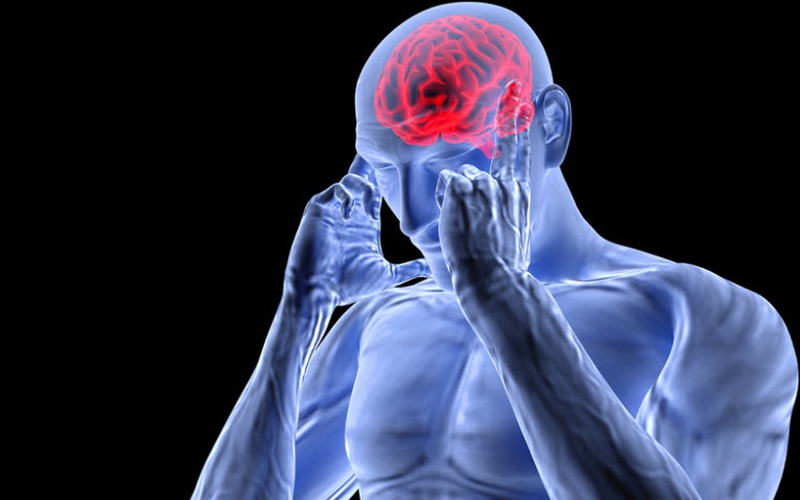Headaches are one of the most common complaints from the patients all over the world. When the annoying headaches attack your brain with intense pain, you almost cannot focus or cannot do anything! You are not always able to take a pill when the pain comes on. But the goods news is that there is a more natural and easier way to get relief, and that is—eating foods! Below you’ll find the most frequent headaches and the superfoods that help headaches. Believe or not, these magic foods can treat them and even prevent them!

Foods That Help Relieve Migraines
Omega-3 Fatty Acids
These are necessary to have a healthy body. Your body will use these fats to build strong nerve cells and cell membranes. It also needs them for the right functioning of blood vessels. Some migraine sufferers said they got less migraines while taking omega-3 fatty acids. This is because of their anti-inflammatory functions, or because they can prevent blood vessels from squeezing shut when they should not. Either way, these fats could perhaps help to stop the suffering of migraines.
Sources of omega-3 fatty acids and foods that help migraines include:
Flaxseeds
Walnuts
Cauliflower
Shrimp
Beef
Soybeans
Tofu
Brussels sprouts
Cold water fish like cod, salmon, sardines and halibut
Riboflavin
This is a B vitamin which the cells of the body needs. Without riboflavin, cells can’t make the energy needed for daily activities. Many times, migraine patients have impaired energy metabolism in muscle and brain cells, which could be partially why they are prone to migraine attacks. But their energy metabolism can be boosted by taking riboflavin. Riboflavin doesn’t have any side effects like prescription medications do, but work just as well as they do. It may take 2-3 months of increasing your riboflavin intake to notice a big difference.
Some great food sources of riboflavin include:
Soybeans
Spinach
Beet greens
Tempeh
Yogurt
Mushrooms, crimini
Eggs
Asparagus
Almonds
Turkey
Magnesium
This is an essential mineral that has many roles in your body. Migraines are rare when diets are high in magnesium-rich foods. Like riboflavin, cells need magnesium for the proper energy metabolism. Low magnesium levels can make people more prone to migraines through defects in cell metabolism. Magnesium is also needed for the regular functioning of blood vessels. Magnesium at low levels seems to make blood vessels in the head more susceptible to trigger migraines. As much as 50% of migraine sufferers have magnesium levels which are low in their blood and brain.
Some great sources for magnesium foods that help headaches include:
Pumpkin seeds
Spinach
Swiss Chard
Soybeans
Sesame seeds
Quinoa
Black beans
Cashews
Sunflower seeds
Navy Beans
Calcium and Vitamin D
These are two nutrients which work together for many things. Mainly, they produce strong and healthy bones and promote regular muscle contraction. It is not clear how they might prevent migraines, but some reports said they could be helpful for patients.
The Calcium foods that help headaches include:
Tofu
Sardines
Sesame seeds
Yogurt
Collard greens
Spinach
Cheese
Turnip greens
Mustard greens
Beet greens
The Vitamin D foods that help headaches include:
Salmon
Sardines
Tuna
Cow's milk
Eggs
Mushrooms, shiitake
Foods That Help Relieve Tension Headaches
CoenzymeQ10
CoenzymeQ10, also known as CoQ10, is a major source of energy production and important for the health of blood vessels. It is also a powerful antioxidant and supports mitochondria, which can be implicated in headaches. CoQ10 also protects the body from free radicals which are stress-induced and your cells as well. You can take supplements for an extra boost.Try for 100 mg 3 times per day.
For foods to help with tension that contain CoQ10, you can try:
Broccoli
Eggs
Tuna
Mackerel
Cauliflower
You can take supplements for an extra boost. Before you take any supplements, please consult your doctor about the dosage or click here for more information.
Unsaturated Fat
Canola and olive oils are examples of plant-based oils and are sources of unsaturated fat which promote positive heart healthy, brain function and the absorption of nutrients. Even though nuts, peanut butter and avocados provide unsaturated fats as well, they could trigger or worse tension headaches. Try to cut back on these foods and cook poultry and fish in canola or olive oil. These oils are headache-friendly and heart-healthy alternatives to cheese, creamy dressings and bacon on salads.
More options for plant-based oils which are good food for headaches include:
Sunflower oil
Safflower oil
Walnut oil
Soybean oil
Foods That Help Relieve Hormonal Headaches
Foods that help headaches in this situation include ones rich in magnesium, as it is very helpful if you are prone to monthly headaches, helping to calm nerves when they get overexcited. Aim for 450 mg of magnesium each day from foods such as Swiss chard and spinach, giving you 40% of your daily need. Additional great sources include:
Bananas
Sweet potatoes
Sesame seeds
Sunflower seeds
Headaches Due to Flu or Cold
Eat one to two servings of fruit that is water-rich such as strawberries, watermelon, cantaloupe, grapefruit and pineapples with at least one meal each day. Most importantly, stay hydrated. Eating a salad is likely one of the last things you’ll feel like doing when you are trying to get over the flu. Instead, drink a glass of low-sodium vegetable juice for foods that help headaches. You’ll get plenty of immune-boosting antioxidants and also keep hydrated. If you want a sweet taste, drink 100% fruit juice.
- 1.
- 2.
- 3.

View All Comments /Add Comment